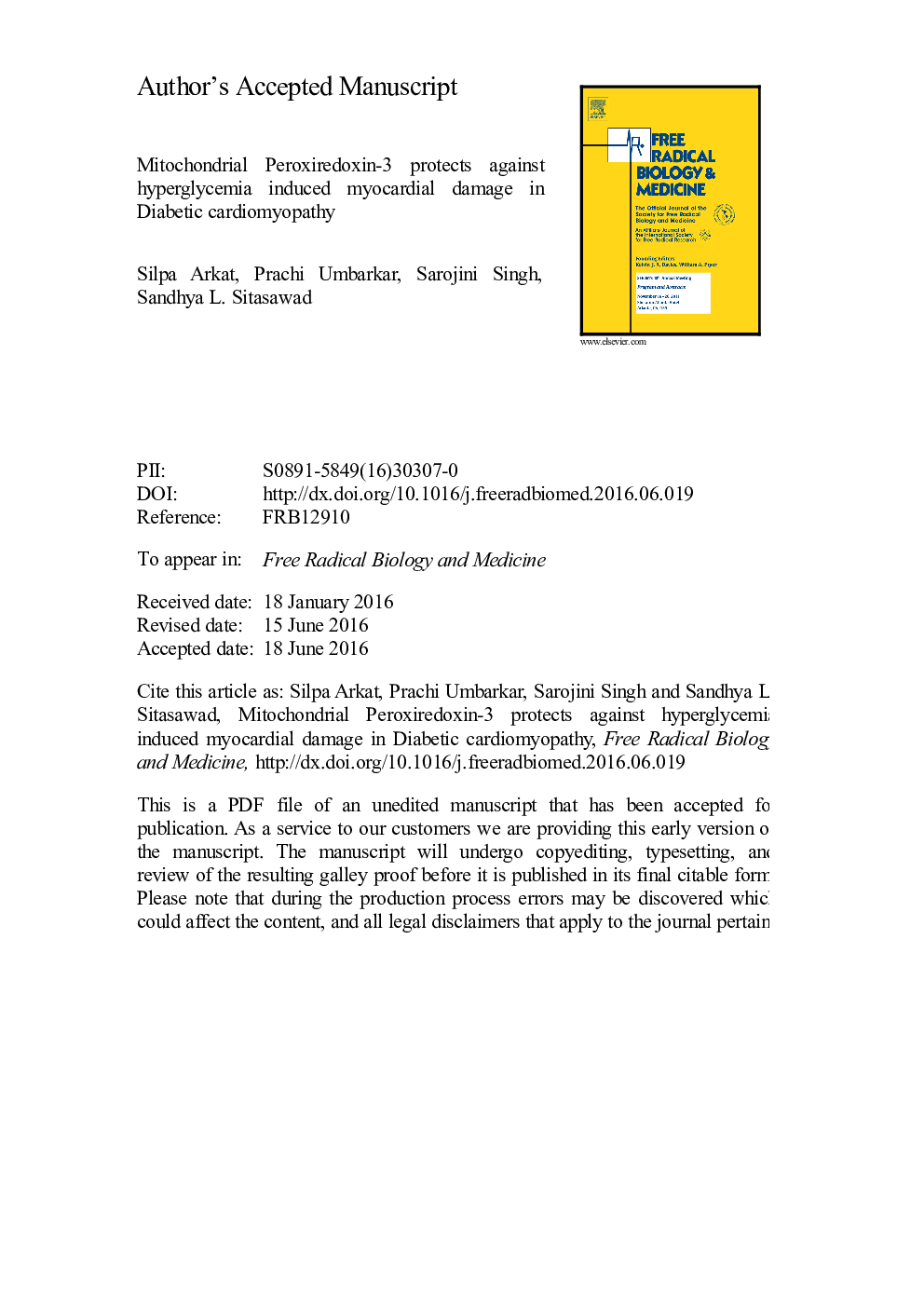| Article ID | Journal | Published Year | Pages | File Type |
|---|---|---|---|---|
| 8267857 | Free Radical Biology and Medicine | 2016 | 34 Pages |
Abstract
Mitochondrial oxidative stress has emerged as a key contributor towards the development of diabetic cardiomyopathy. Peroxiredoxin-3 (Prx-3), a mitochondrial antioxidant, scavenges H2O2 and offers protection against ROS related pathologies. We observed a decrease in the expression of Prx-3 in the hearts of streptozotocin (STZ) induced diabetic rats, and also high glucose treated H9c2 cardiac cells, which may augment oxidative stress mediated damage. Hence we hypothesized that overexpression of Prx-3 could prevent the cardiac damage associated with diabetes. In this study we used quercetin (QUE) to achieve Prx-3 induction in vivo, while a Prx-3 overexpressing H9c2 cell line was employed for carrying out in vitro studies. Diabetes was induced in Wistar rats by a single intraperitoneal injection of STZ. Quercetin (50Â mg/kg body weight) was delivered orally to hyperglycemic and age matched control rats for 2 months. Quercetin treatment induced the myocardial expression of Prx-3 but not Prx-5 both in control and STZ rats. Prx-3 induction by quercetin prevented diabetes induced oxidative stress as confirmed by decrease in expression of markers such as 4-HNE and mitochondrial uncoupling protein, UCP-3. It was also successful in reducing cardiac cell apoptosis, hypertrophy and fibrosis leading to amelioration of cardiac contractility defects. Overexpression of Prx-3 in cultured H9c2 cardiac cells could significantly diminish high glucose inflicted mitochondrial oxidative damage and apoptosis, thus strengthening our hypothesis. These results suggest that diabetes induced cardiomyopathy can be prevented by elevating Prx-3 levels thereby providing extensive protection to the diabetic heart.
Keywords
TrxCytochrome oxidase subunit IVCOX IVPRXUCP3LVSPLVEDPTrxRMABPSTZCTGFANP4-HNEGPXDCM4-hydroxynonenalROSCardiac dysfunctionstreptozotocinElectrocardiographyECGQuethioredoxin reductaseOxidative stressTUNELthioredoxinApoptosisConnective tissue growth factormean arterial blood pressureleft ventricular systolic pressureleft ventricular end-diastolic pressureterminal deoxynucleotidyl transferase-mediated dUTP nick-end labelingbody weightHeart weightPeroxiredoxin-3Uncoupling protein 3Peroxiredoxinatrial natriuretic peptidediabetic cardiomyopathyQuercetinglutathione peroxidaseReactive oxygen species
Related Topics
Life Sciences
Biochemistry, Genetics and Molecular Biology
Ageing
Authors
Silpa Arkat, Prachi Umbarkar, Sarojini Singh, Sandhya L. Sitasawad,
